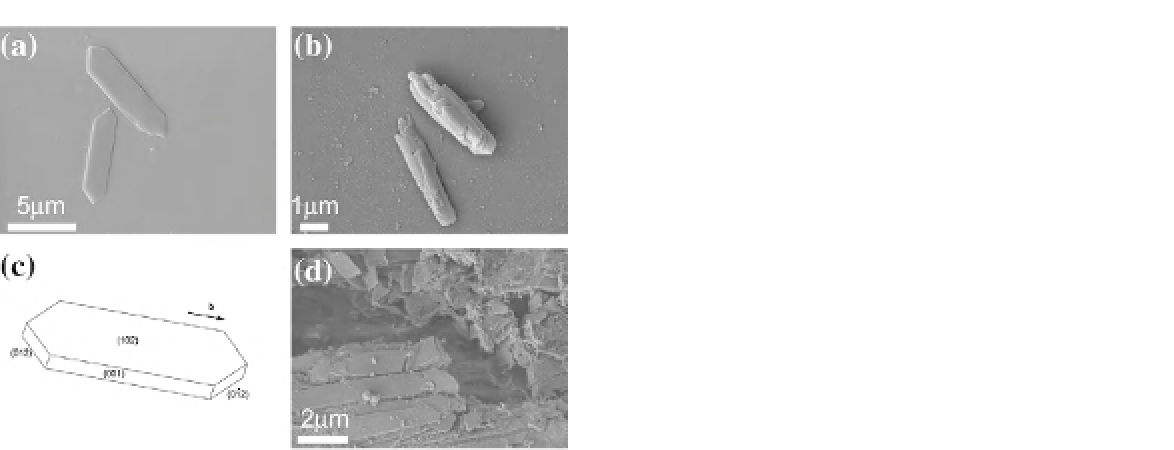Biomedical Engineering Reference
In-Depth Information
mechanism to inhibit crystal growth in the direc-
tion of the molecular stacking. This way, the
morphology of fish skin provides the best pos-
sible optical properties for reflection, due not
only to constructive interference but also to bire-
fringence of guanine.
Stacking three or four periodic multilayered
structures, each tuned to a different part of the
visible spectrum, leads to broadband reflectance
[65-67]
and multiband reflectance
[66]
. It may
be responsible for the silvery appearance of
many fish, particularly herring (
Clupea harengus
)
[68]
. Another way to obtain silvery appearance
is by having a multilayered structure with a
large number of layers with random variations
of thickness over a certain range and each made
of one of two materials that differ in refractive
index, as demonstrated by two species of fish:
the hairtail (
Trichiurus lepturus
) and the ribbon-
fish (
Lepidopus caudatus
)
[69]
. Fish use the mirror
effect for camouflage.
FIGURE 11.12
SEMs of (a) isolated biogenic crystals
from the skin of Koi fish, and (b)
in vitro
grown anhydrous
guanine crystals crystallized from an anhydrous solution of
DMSO. (c) Schematic representation of the morphology of
the biogenic crystals. (d) SEM showing guanine platelets
from fish skin
[64]
. Courtesy of Lia Addadi (Weizmann Insti-
tute of Science, Israel). Reproduced with permission from
the American Chemical Society.
11.4.2 Structural Colors Due
to Diffraction Gratings
Precious opals best represent structural colors
that arise from the diffraction-grating effect. As
shown in
Figure 11.13
, a precious opal exhibits
intense colors that change with the viewing angle,
a phenomenon called the
play of colors
. Scanning
electron microscopy--see the images in
Figure
11.14
--has revealed that precious opals contain
layers of closely packed spherical particles of
amorphous silica ranging from 150 to 300 nm
in diameter
[70]
. The layers are stacked to form
either a hexagonal or a cubic close-packed lattice.
The luster and the play of colors in opals are thus
due to the Bragg phenomenon, discussed in Sec-
tion
3.2
. Equation
(11.2)
applies, with
d
=
D
for
cubic close packing and
d
=
(2/3)
1/2
D
for hex-
agonal close packing
[71]
, where
D
is the diam-
eter of the silica spheres. With the assumption of
normal incidence (sin
θ
=
1) and replacing
λ
by
λ
/
n
eff
, where
n
eff
is the effective refractive index,
Eq.
(11.2)
transforms to
λ
=
2
n
eff
d
/
m
, with
m
as
granules are arranged in ordered layers around
the edges of feather barbules in iridescent spe-
cies. Spectrometry, transmission electron
microscopy, and thin-film optical modeling
have confirmed that these ordered layers typi-
cally create iridescence
[63]
.
Periodic multilayered structures comprising
guanine crystals (an organic material with high
refractive index) separated by cytoplasm
(a material with lower refractive index) hold the
key to colored and broadband silver reflections
in many fish. X-ray diffraction studies have
revealed the guanine to be anhydrous. The SEMs
in
Figure 11.12
show isolated biogenic crystals
from the skin of the koi fish (
Cyprinus carpio
)
[64]
. The crystals are semihexagonal thin plates
(50-150 nm thick) and a few micrometers long.
Because the axial component of the polarizabil-
ity tensor of a guanine molecule is significantly
smaller than the transverse component, guanine
is anisotropic. The koi fish exhibit an efficient

